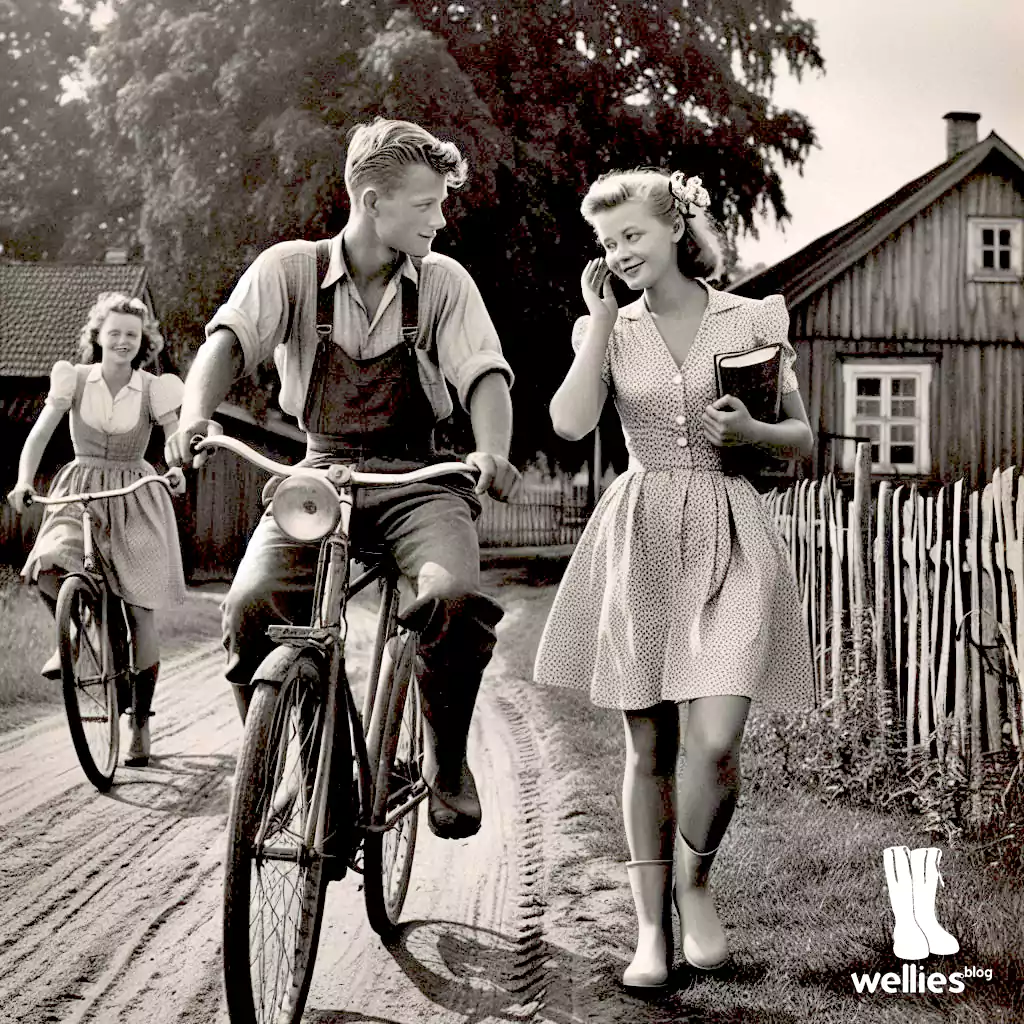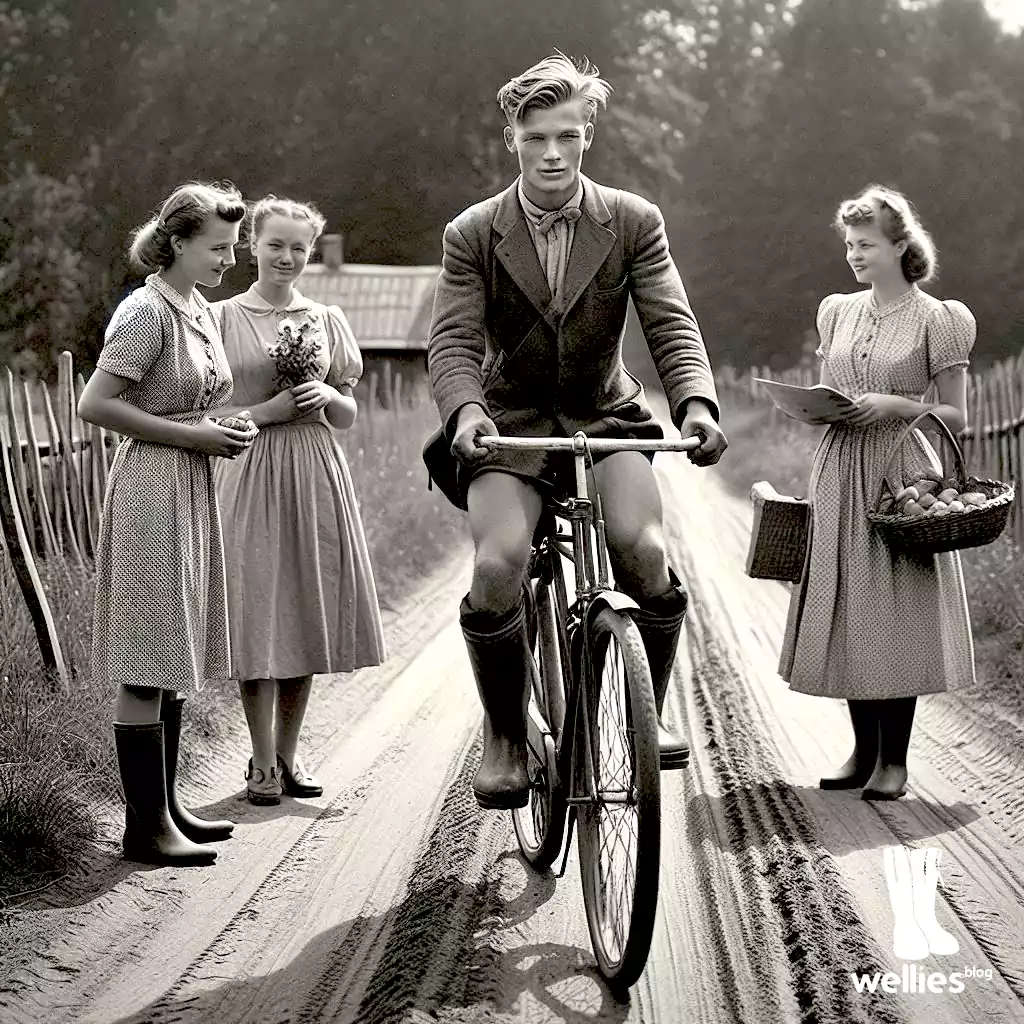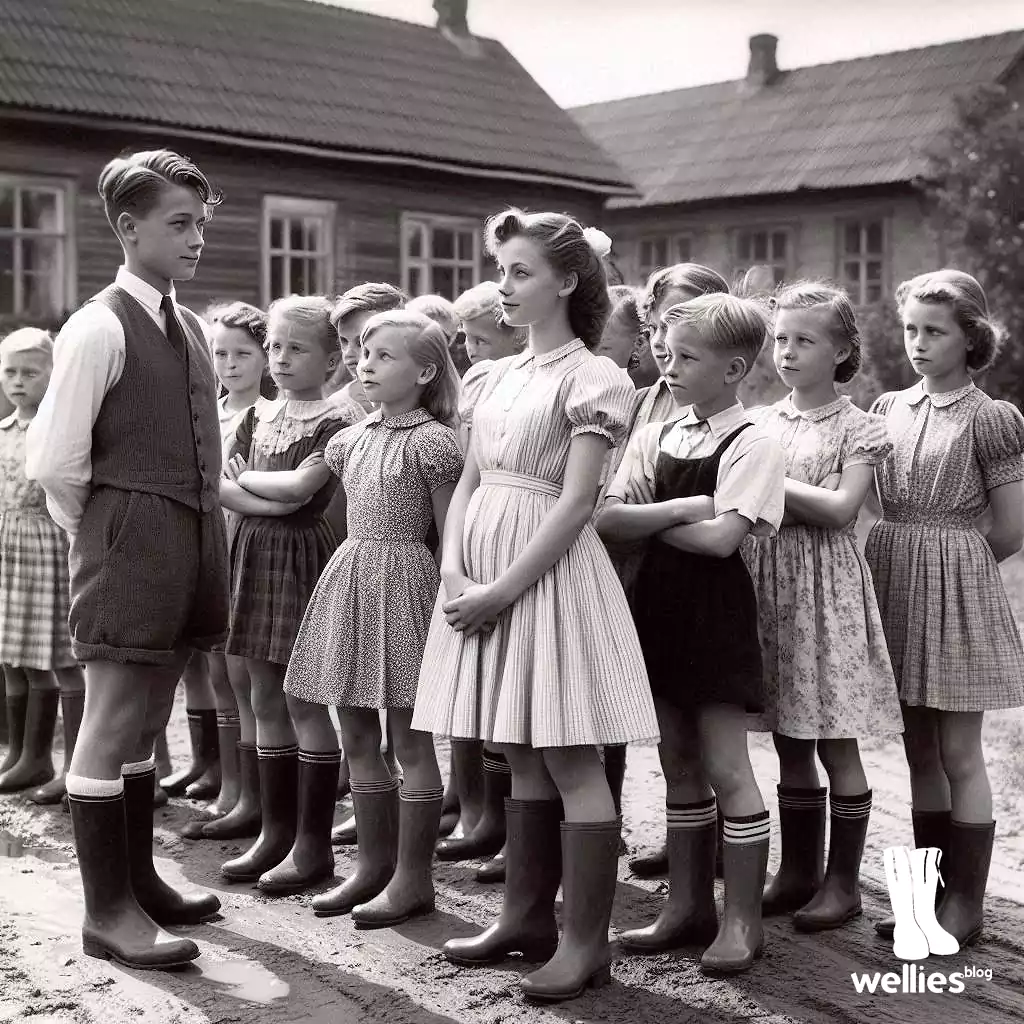The collection of the former teacher Rein Kahusk consists of nearly 70 pairs of rubber boots, with the oldest ones dating back to the 1950s. In retirement, the former teacher from the village of Voore in Jõgeva County found a unique hobby: he started collecting rubber boots. Now he owns a collection of almost 70 pairs of rubber boots that he likes so much, he even writes haikus about them.
There are several reasons why Rein Kahusk, a retiree from Saare Parish in Jõgeva County, has been collecting rubber boots for the past ten years. “I’ve been interested in rubber since my youth. After the war, young women dreamed of wearing rubber boots and rubber shoes,” recalls Kahusk. “Perhaps my interest was sparked because I remembered how girls used to walk around in rubber shoes.” The girls even became jealous of each other because of it: they would growl, tear each other’s eyes out, or simply ruin the other’s shoes.”

During the Soviet era, Czech rubber shoes were particularly rare. According to Kahusk, they were somewhat easier to obtain in Riga, so people often went there and brought back several pairs. “An acquaintance of mine was arrested for such an act and charged with speculation, and he went to prison for several years.”
Kahusk’s boot collection is stored in two places: in his house in Linnamäe and near his house in the village of Kääpa, in the Kalevipoeg Museum. In total, he has collected 70 pairs of rubber boots. At home, he has 30 pairs displayed like in a real museum.
Rubber Boots from the Neighbor’s Attic
He bought the rubber boots in stores, at online auctions, received them as gifts, or found them, for example, in a box of old boots in a neighbor’s attic. There, he found a special pair of “Nordic rubber boots” from the 1950s. They were quite damaged, and Kahusk had to clean and repair them. These rubber boots are now in the Kalevipoeg Museum. His collection also includes boots from 1963 from the Soviet era, as indicated by the year 1963 visible on the sole. His son also helped him expand his collection, bringing fisherman’s rubber boots from a friend’s basement. He got a Japanese pair of galoshes from Tartu. He used them himself for several years, but now the rubber is starting to crumble. He also showed the press some Chinese rubber boots, which lasted a very short time and completely disintegrated. He displays them to show how the material deteriorates. In addition to Estonian, Japanese, and Chinese rubber boots, he also showcases products from the Soviet Union, Finland, Italy, South Korea, and Greece.

Kahusk explained that the Greek rubber boots are made of thermoplastic, a material that becomes stiff in the cold and flexible in the warmth. He mentioned that thermoplastic has been much more active lately than real rubber and is even more durable. Rubber boots are so dear to him that he writes haikus about them. The shoe collector knows by heart which shoes he doesn’t have in his collection and what he definitely wants to add. He is particularly interested in old boots, especially the rare Czech boots with high shafts, zippers, and heels.
Which Rubber Boots to Buy?
Rein Kahusk, a rubber boot collector, offers advice on buying rubber boots: “If you have to choose, go for those with a thinner rubber layer.” Thick and stiff rubber boots may look nice at first, but it doesn’t last— the rubber starts to crumble. But if you choose thinner ones, the rubber is much more elastic and the durability is also higher. He uses silicone grease and silicone oil for maintenance. It has a good effect on the rubber, preventing it from aging or crumbling, and also improves the appearance.”

The article about Rein Kahusk was published in 2013, when he was 80 years old.
Source: ohtuleht.ee




